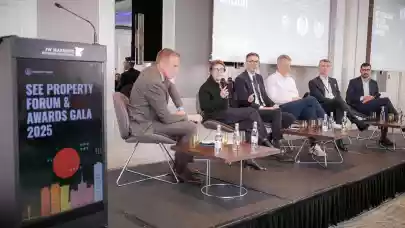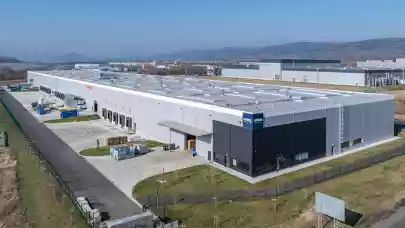
The closing panel of SEE Property Forum 2025 in Bucharest, moderated by Victor Constantinescu from Kinstellar, brought together leading local players to assess sentiment, shifting asset preferences, and the practical steps investors must take to navigate the year ahead. The panellists examined where capital is moving, what risks remain most pressing, and how legal, geopolitical, and market dynamics will shape investment decisions across Romania and CEE.
Irina Dimitriu, Partner at Reff & Associates | Deloitte Legal, set the stage with a pragmatic view of investor sentiment and cross-border capital flows. “While I tend to avoid making firm predictions, what I’m observing is sustained, even growing, interest from regional investors—particularly from Poland, the Czech Republic, and Hungary. However, we are not yet seeing foreign capital from outside our region, such as the US or UK, entering Romanian real estate, which signals both room for improvement and a certain resilience in local investment appetite.” She further explained, “The greatest challenges in the legal context revolve around unpredictability—especially in fiscal and legislative frameworks. Investors must grapple not only with new regulatory changes but also with the imperfect implementation of the current laws, which can cause significant delays and uncertainty in transactions. For example, the FDI approval process is evolving, but transaction parties often fail to realise its full scope or consequences.”
Gijs Klomp, Business Development Manager at WDP, shared insights from recent interactions with institutional investors. “Our conversations with analysts and major investors give a fairly encouraging picture, particularly for Romania’s logistics and industrial sectors. The market maintains a healthy balance between supply and demand, distinguishing it from markets like Poland that were hit hard by external shocks such as the war in Ukraine. As Gijs affirmed, ‘Because Romania never relied on large numbers of core investors, it remains stable; if you never had them, you can’t lose them, and that stability is now an asset.’ He emphasised the importance of pragmatic investment: ‘Many people complicate structures and deals. The opportunity today is to select straightforward, sound projects and keep things simple, because the Romanian market offers plenty of them.’”
From an international perspective, Sorin Preda, Founder and CEO of Global Vision, underlined how global trends are shaping local investments. “What happens in the United States or among the world’s largest asset managers, like BlackRock, has a ripple effect across Europe and ultimately influences the availability and direction of capital here. Real estate is now in fierce competition with technology—especially AI—and energy for investor attention.” Sorin advocated for rigorous risk management: “We must perform stress tests on every new project and provide convincing delivery and exit plans to reassure investors. The uncertainties are elevated by geopolitical factors—Romania’s proximity to conflict zones underscores the need for resilient structures and a careful selection of partners who can navigate volatile environments.”
Andrei Văcaru, Head of Capital Markets CEE at iO Partners, examined Romania’s asset classes and capital sources. “Transaction volumes and investor appetites vary greatly by sector—with retail parks, hotels, and logistics standing out for their strong fundamentals, while offices remain more challenging. Local capital, although increasing, still only covers around twenty to thirty percent of transactions, so foreign investment, primarily from within CEE, will remain crucial in 2026. ‘To succeed, investors need to focus on assets with healthy fundamentals, keep an eye on macroeconomic indicators, and be prepared for the sector-specific volatility that continues to shape our market.’”
Andrei Marian, Business Development Director at CTP Romania, added a developer’s perspective on the evolving opportunity landscape. “For international investors looking at Romania and the wider CEE region in 2026, it’s essential to commit for the longer term and be ready to seize opportunities in emerging asset classes. The defense and energy sectors, as well as supporting spaces for thriving small and medium enterprises, present compelling options for those willing to adapt and innovate their strategies. ‘The ecosystem evolving around new sectors like defence is attracting interest, especially when investors adopt a mature, flexible approach and work closely with trusted partners to create value in uncertain times.’”
The session closed with a consensus on the importance of legal compliance, careful partner selection, and thorough stress testing in all business plans. In Victor Constantinescu’s closing words: “The fundamentals, the right partners, and a clear-eyed view of the legal and fiscal landscape are the cornerstone of investment success in 2026. For those who approach this market diligently, there are real opportunities to be seized.”




